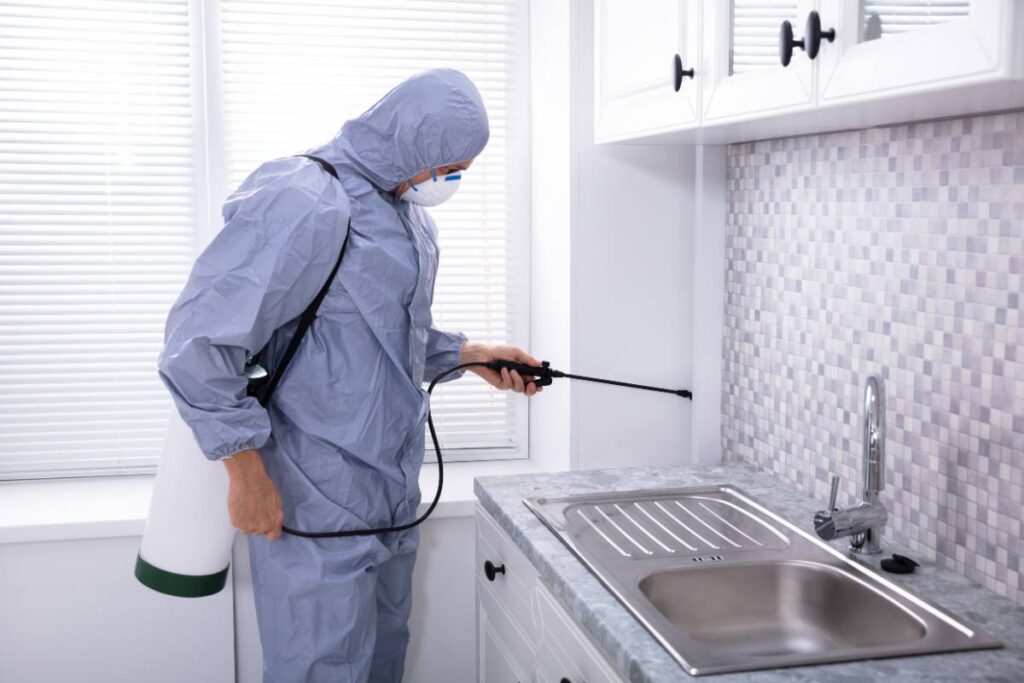In order to keep homes, businesses, and public areas healthy and safe, pest control services are essential. The presence of pests can pose significant threats, ranging from property damage to potential health risks. In this exploration, we delve into the multifaceted purpose of pest control services, shedding light on their importance in creating safe and pest-free environments.
Understanding the Need for Pest Control
The Menace of Pests
Pests, encompassing a diverse range of insects, rodents, and other unwanted invaders, can wreak havoc in various settings. Their impact extends beyond mere nuisance, and addressing their presence promptly is essential for several reasons:
- Property Damage: Pests such as termites, rodents, and certain insects have the potential to cause significant damage to structures, furniture, and valuable belongings.
- Health Risks: Many pests are carriers of diseases, posing a direct threat to human health. Cockroaches, rodents, and mosquitoes, for example, can transmit various illnesses.
- Contamination of Spaces: Pests can contaminate food, water, and surfaces, leading to hygiene issues and the spread of diseases. This is particularly concerning in residential kitchens, restaurants, and food processing facilities.
- Impact on Agriculture: In agricultural settings, pests can devastate crops, leading to reduced yields and economic losses for farmers.
The Comprehensive Purpose of Pest Control Services
Preventive Measures
- Routine Inspections: Pest control services conduct routine inspections to identify potential entry points and signs of infestation. Early detection allows for proactive measures to prevent pest problems before they escalate.
- Sealing Entry Points: Professionals assess and seal potential entry points for pests, preventing their access to buildings. This includes cracks, gaps, and openings in walls, windows, and doors.
Identification and Assessment
- Species Identification: Pest control experts identify the specific pests present in a given environment. This knowledge is crucial for devising effective control strategies tailored to the characteristics of each pest.
- Assessment of Infestation Severity: The extent of infestation is assessed to determine the appropriate level of intervention. This involves evaluating the population size, breeding sites, and potential areas of harborage.
Customized Treatment Plans
- Targeted Chemical Applications: Pest control services utilize a variety of chemical treatments that are specific to the type of pests encountered. These treatments are applied strategically to minimize environmental impact while maximizing effectiveness.
- Biological Pest Control: In some cases, natural predators or pathogens of pests are introduced as a biological control method. This eco-friendly approach targets pests while minimizing the use of chemical pesticides.
Rodent Control
- Trapping and Exclusion: For rodent infestations, pest control services employ trapping methods to capture and remove rodents. Additionally, exclusion techniques are used to prevent their re-entry into the treated area.
- Sanitation Recommendations: Pest control experts provide recommendations for maintaining proper sanitation to discourage rodent activity. This includes secure food storage and waste management practices.
Termite Management
- Soil Treatment: Termite control often involves treating the soil around structures to create a protective barrier. This prevents termites from gaining access and protects the building’s structural integrity.
- Baiting Systems: In addition to soil treatments, baiting systems may be used to target termite colonies. These baits are strategically placed to attract termites, leading to the colony’s elimination.
Education and Awareness
- Client Education: Pest control services educate clients about the pests encountered, the treatment process, and preventive measures. This empowers individuals to contribute to maintaining a pest-free environment.
- Awareness of Environmental Impact: Responsible pest control services prioritize environmentally friendly practices and educate clients on minimizing the impact of treatments on the surrounding ecosystem.
Post-Treatment Monitoring
- Follow-Up Inspections: After initial treatments, pest control services conduct follow-up inspections to assess the effectiveness of the intervention. Adjustments to the treatment plan are made as needed.
- Preventive Maintenance Plans: Long-term preventive maintenance plans are often recommended to ensure ongoing protection against pests. Regular inspections and treatments are scheduled based on the specific needs of each client.
Commercial Pest Control
- Compliance with Regulations: Pest control services for commercial establishments ensure compliance with health and safety regulations. This is especially critical in industries such as food service and healthcare.
- Customized Solutions for Businesses: Tailored pest control solutions are developed to address the unique challenges of commercial spaces. This may include warehouses, restaurants, hotels, and manufacturing facilities.

Pest Control Services in Denver: Addressing Regional Needs
Denver’s Unique Pest Challenges
Denver, with its distinctive climate and geographical features, presents specific pest challenges. Pest control services in Denver cater to regional needs by addressing issues such as:
- Rodent Control in Urban Areas: Urban environments in Denver may face challenges related to rodent infestations. Pest control services employ strategies to address these issues in densely populated areas.
- Wildlife Management in Suburban Settings: Suburban areas around Denver may encounter wildlife intrusion. Pest control services offer humane wildlife management solutions to ensure coexistence with local fauna.
- Seasonal Pest Patterns: Denver’s climate influences seasonal pest patterns. Pest control services in the region adapt treatments based on the prevalent pests during different times of the year.
Environmentally Conscious Approaches
Pest control services in Denver often embrace environmentally conscious approaches, considering the region’s commitment to sustainability. Integrated pest management (IPM) practices are employed, emphasizing the least harmful methods to achieve effective control.
Conclusion
The purpose of pest control services extends far beyond the elimination of unwanted intruders. It encompasses a comprehensive approach to safeguarding spaces, protecting health, and preserving the integrity of structures. From preventive measures and customized treatment plans to education and ongoing monitoring, pest control services play a vital role in creating and maintaining pest-free environments.
In regions like Denver, where unique pest challenges arise, local pest control services tailor their approaches to address the specific needs of the community. By combining expertise, technology, and a commitment to environmental responsibility, pest control services contribute to the well-being of both individuals and the ecosystems they inhabit.






